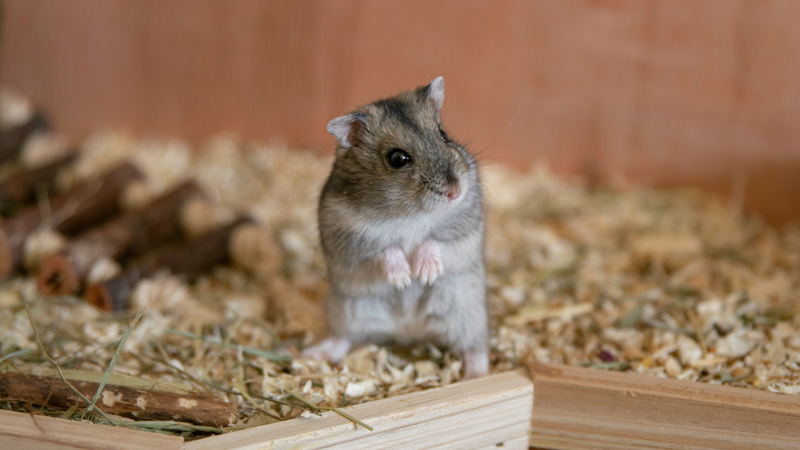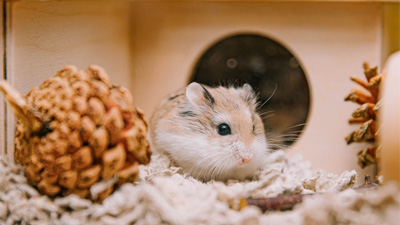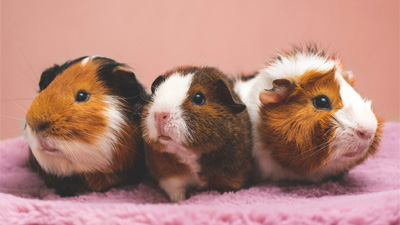Can a Kid Be Allergic to a Hamster?

Photo by Frenjamin Benklin on Unsplash
Hamsters are adorable, small, fuzzy animals that can make great pets, especially for children. However, not everyone can handle being around hamsters. Some people, including children, may have adverse reactions when they come into contact with hamsters. These reactions are often allergic in nature, and they can range from mild to severe.
In this article, we will explore the topic of hamsters and children's allergies in-depth and provide tips on how to keep your child safe and healthy if they are allergic to hamsters.
Understanding Allergies
Before we dive into hamsters and allergies, it's important to have a basic understanding of what allergies are. Allergies occur when the immune system reacts abnormally to certain foreign substances. These foreign substances are called allergens, and they can be anything from pollen and dust to certain foods and animal dander.
When exposed to an allergen, the immune system produces an inflammatory response, leading to a range of symptoms. Common allergy symptoms can include sneezing, coughing, itching, hives, rashes, and vomiting. In severe cases, allergies can lead to breathing difficulties and potentially life-threatening reactions.
Hamsters and Allergens
Hamsters, like all animals, produce allergens that can trigger allergic reactions in sensitive individuals. The primary source of hamster allergens is their dander, which consists of tiny particles of dead skin. These particles can become airborne and settle on surfaces throughout the home, leading to the potential for exposure and subsequent allergic reactions.
It's important to note that while dander is the primary source of hamster allergens, other factors can contribute to allergies as well. Hamster saliva, urine, and feces also contain allergens that can trigger symptoms in susceptible individuals.
Common Allergens in Hamsters
Dander: Hamster dander is the primary allergen produced by these pets. Dander consists of tiny particles of dead skin, which can become airborne and easily inhaled, leading to allergic reactions.
Urine: Hamsters have a strong urine odor due to the concentration of ammonia in their urine. This odor can be bothersome to some individuals, particularly those with respiratory sensitivities.
Feces: Hamster feces can also release allergens into the air when dried or disturbed. These allergens can cause respiratory symptoms in sensitive individuals.
Saliva: While less common, some individuals may also be allergic to hamster saliva. This can cause allergic reactions when in direct contact with the hamster's saliva or if the saliva comes into contact with broken skin. Can Kids Be Allergic to Hamsters?
The short answer is yes, kids can be allergic to hamsters. The allergens produced by hamsters can trigger allergic reactions ranging from mild to severe. However, it's important to note that not every child who is allergic to pets will necessarily be allergic to hamsters. Allergies can vary from person to person, and individual sensitivities play a significant role.
If your child has never been exposed to hamsters before, it's best to start with short periods of interaction to see if they display any signs of an allergic reaction. Some children may not show symptoms until after several exposures, so it's important to continue monitoring your child for any signs of an allergic reaction.
Symptoms of Hamster Allergies in Children
The symptoms of hamster allergies in children are similar to those experienced by adults. However, children may have a harder time expressing their symptoms, especially if they are very young. Some common symptoms of hamster allergies in children include:
- Runny nose
- Sneezing
- Itchy eyes
- Coughing
- Wheezing
- Rash
- Hives
- Vomiting
- Difficulty breathing
It's essential to monitor your child closely for any of these symptoms after they have been around a hamster to determine if they are allergic. If you notice any of these symptoms, it's best to consult with your pediatrician or an allergist for further guidance.
Tips for Minimizing Allergy Symptoms
If your child is allergic to hamsters, there are several steps you can take to minimize allergy symptoms. These steps may allow your child to enjoy the companionship of a hamster without significant discomfort.
Consult with an Allergist: If you suspect that your child has allergies, it's crucial to consult with an allergist to determine the specific allergens causing the reactions. This will help you identify if hamsters or hamster allergens are a trigger for your child's allergies.
Allergy Testing: Allergy testing can help identify specific allergens causing reactions in individuals. Understanding which allergens, including those from hamsters, are triggers for your child's allergies can help you make an informed decision about pet ownership.
Create an Allergy-Free Space: Establishing certain areas or rooms in your home where your hamster is not allowed can help reduce allergen exposure. Ensure that these spaces are well-ventilated and regularly cleaned to minimize the spread of allergens throughout the home.
Frequent Cage Cleaning: Regular cleaning of your hamster's cage is essential to reduce the buildup of allergens. Use a high-efficiency particulate air (HEPA) filter vacuum cleaner to remove any dander, debris, or hair that may have accumulated in the surrounding area.
Use Appropriate Bedding: Some types of bedding may produce fewer allergens than others. Avoid using cedar or pine bedding, as these can release aromatic compounds that may worsen allergies. Instead, opt for dust-free alternatives such as paper-based or aspen bedding.
Wash Hands Frequently: After handling your hamster or cleaning their cage, it's important to wash your hands thoroughly with soap and water to remove any allergens that may have come into contact with your skin.
Invest in Air Purifiers: Air purifiers with HEPA filters can help trap and remove allergens from the air, reducing overall allergen exposure in your home.
Consider Wearing a Mask: If your child is highly sensitive to hamster allergens, wearing a mask while cleaning the cage or directly handling the hamster may help reduce allergen inhalation.
Avoid Face-to-Face Contact: Limiting direct contact between your child's face and the hamster can reduce the risk of allergen transfer to more sensitive areas, such as the eyes and nose.
Monitor Your Child's Symptoms: Keep track of your child's allergy symptoms and severity over time. If symptoms persist or worsen despite your efforts to minimize exposure, it may be necessary to consider rehoming the hamster or exploring alternative pet options.
Alternatives for Allergy Sufferers
If, after taking these precautions, you find that your child continues to experience significant discomfort or health issues due to hamster allergens, it may be necessary to consider alternative pet options. Here are a few suggestions for hypoallergenic pets that may be more suitable for children with allergies:
Fish: Fish make excellent pets for children with allergies as they do not produce typical allergens such as dander. However, it's important to note that some children may be sensitive to fish food or the cleaning products used in maintaining the aquarium.
Reptiles: Reptiles, such as geckos or turtles, are another option for children with allergies. These pets do not produce dander that can trigger allergies in the same way that mammals do. However, it's important to be aware that reptiles require specific care, including appropriate temperature and habitat conditions.
Invertebrates: Invertebrates, such as tarantulas or beetles, can be an interesting alternative for children with allergies. These pets typically do not produce allergens that affect humans. However, it's essential to research and understand the care requirements for any invertebrate pet before bringing them into your home.
Hypoallergenic Dog Breeds: If you have your heart set on a furry companion and are willing to put in the extra effort, some hypoallergenic dog breeds produce fewer allergens. These breeds have hair instead of fur and may be less likely to trigger allergic reactions. However, it's important to note that no dog breed is entirely hypoallergenic, and individual sensitivities still play a significant role.
Conclusion
Deciding whether hamsters are suitable for children with allergies requires careful consideration. While hamsters do produce allergens that can trigger allergic reactions, there are steps you can take to minimize allergen exposure and reduce symptoms. However, it's essential to consult with an allergist and assess your child's individual sensitivities before bringing a hamster into your home.
By implementing measures such as creating allergen-free spaces, regular cage cleaning, hand hygiene, and considering alternative pets, you can make an informed decision about pet ownership. Remember, managing allergies effectively often requires a multi-faceted approach, and it may take time to find the right balance that allows your child to enjoy a pet without significant discomfort.
You May Also Like
 Pet HamsterIs a Hamster a Type of Rat? Debunking the Myth
Pet HamsterIs a Hamster a Type of Rat? Debunking the Myth Pet HamsterWhat is the Most Common Type of Hamster?
Pet HamsterWhat is the Most Common Type of Hamster? Pet HamsterHamsters vs. Mice: What Is the Difference?
Pet HamsterHamsters vs. Mice: What Is the Difference? Pet HamsterWhich Type of Hamster is the Friendliest?
Pet HamsterWhich Type of Hamster is the Friendliest? Pet HamsterIs It Better to Have 2 Hamsters or 1?
Pet HamsterIs It Better to Have 2 Hamsters or 1? Pet RatsExploring the 7 Different Types of Pet Rats
Pet RatsExploring the 7 Different Types of Pet Rats